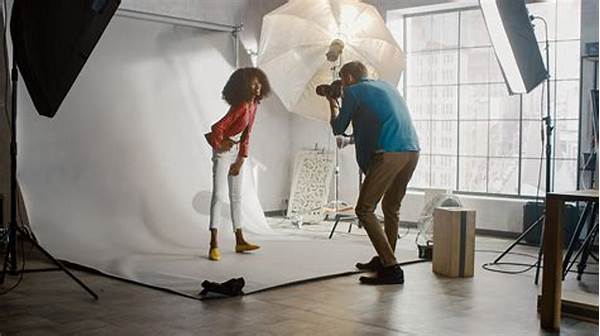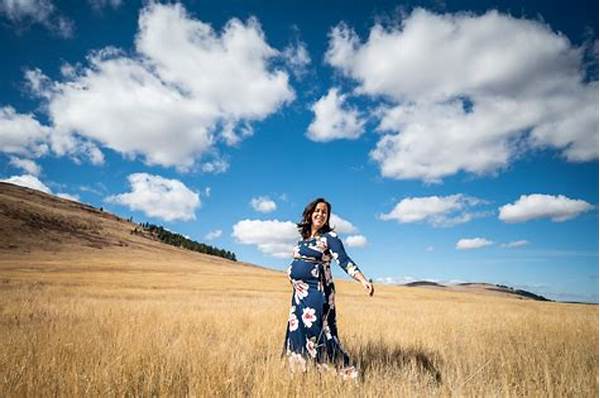Hey there, fellow shutterbugs! If you’ve ever found yourself frustrated with blurry or out-of-focus portraits, you’re not alone. Capturing that perfect portrait can be a real challenge, especially when you’re just getting started. But don’t worry, avoiding focus errors in portraits is totally doable with a bit of practice and some handy tips. Let’s dive into the world of crisp and clear portrait photography, shall we?
Read Now : Enhancing Texture In Portrait Photos
Understanding the Basics of Portrait Focus
When it comes to portrait photography, focus is everything. Having a sharp, well-focused image ensures that your subject is the star of the show. But how do you master the art of focusing just right? First, ensure you’ve got the basics down: use your AF points wisely and always keep your camera steady. Continuous focus mode can be a lifesaver, especially if your subject likes to move around. Next, play with your depth of field. A wide aperture (like f/1.8 or f/2.8) can make your subject pop, lending a beautiful out-of-focus background that highlights your model even more. Remember, avoiding focus errors in portraits means being mindful of your light source. Good lighting can help your camera’s autofocus system work its magic. And here’s the golden rule: practice, practice, practice. Every photo you take is one step closer to mastering the craft.
Tips to Nail That Perfect Focus
1. Autofocus Modes Are Your Friends: Selecting the right autofocus mode is key in avoiding focus errors in portraits. Experiment with different modes to find the one that suits your style.
2. Manual Focus Magic: Sometimes, old-school is the way to go. Using manual focus gives you complete control over where and how you focus on your subject.
3. Eye-Detection AF: If your camera has it, use it! Eye-detection AF is like having a secret weapon for locking onto your subject’s eyes perfectly.
4. Stay Still or Use Support: Avoiding focus errors in portraits can sometimes be as simple as using a tripod or stabilizing your body to fend off unnecessary shakes.
5. Frequent Checking: Zoom in and review your images on the camera’s display to ensure that perfect focus is indeed there. This small step can save you loads of time and heartache in editing.
Common Mistakes and How to Avoid Them
Even the pros make mistakes, but here’s how to sidestep a few common pitfalls. One biggie is not paying attention to your focus point. Cameras often default to focusing on the nearest object, so be sure to manually select the best point. Another misstep is ignoring depth of field. A too-shallow depth can work against you if you want more than just your subject’s nose in focus. Lastly, don’t forget to breathe! Believe it or not, holding your breath can stabilize your shot. Avoiding focus errors in portraits is as much about technique as it is about finding what works for you.
Read Now : Exploring Artistic Changes In Photography
Key Tools for Perfect Portrait Focus
Navigating the technical side of things is crucial. So, what tools should be in your focus-avoiding toolkit? Well, good quality lenses are a great investment – they can make a world of difference. The focal length of your lens can enhance your subject, while quality glass ensures sharpness. Another tool? A reliable tripod. It’s your best friend for low light conditions, helping you maintain that crucial stability. Don’t underestimate the power of practice shots. They might seem like a drag, but these trial-and-error tests are a direct path to avoiding focus errors in portraits.
Techniques for Enhancing Focus
Autofocus Techniques
Autofocus can be both a blessing and a curse in portrait photography. With the multitude of settings and modes available, it’s easy to get overwhelmed. But when used correctly, autofocus can drastically reduce your chances of missing the mark. Avoiding focus errors in portraits starts with understanding your camera’s capabilities. Use single-point focus for stationary subjects to ensure the eyes are razor-sharp. In contrast, if your subject is moving, switch to continuous autofocus to keep tracking them as they move. Also, familiarize yourself with back-button focus; it separates focus and shutter release functions and provides greater control over your composition.
Mastering the Craft of Manual Focus
Alright, let’s talk manual focus. It’s an aspect that often intimidates beginners, but conquering it opens a world of creative possibilities. Going manual forces you to be more intentional, allowing for precise control over your image. A little pro tip here: use live view for greater accuracy. This feature magnifies your subject on your screen, helping you lock onto those finer details. Additionally, focus peaking — if your camera offers it — will highlight in-focus areas, making manual adjustments much smoother. Avoiding focus errors in portraits isn’t just about pressing buttons; it’s about embracing a mix of techniques and finding what clicks for you.
Conclusion
In the end, the secret to avoiding focus errors in portraits lies in a mix of knowledge, technique, and lots of practice. Each photographer’s journey is unique, but the goal remains the same: to capture stunning portraits that tell a story. By focusing on the eyes, experimenting with modes, and fine-tuning your skills, you’ll be well on your way to mastering portrait photography. Don’t be afraid to make mistakes; each error is a step closer to becoming adept at avoiding focus errors in portraits. Happy shooting, and may your portraits be forever sharp!



